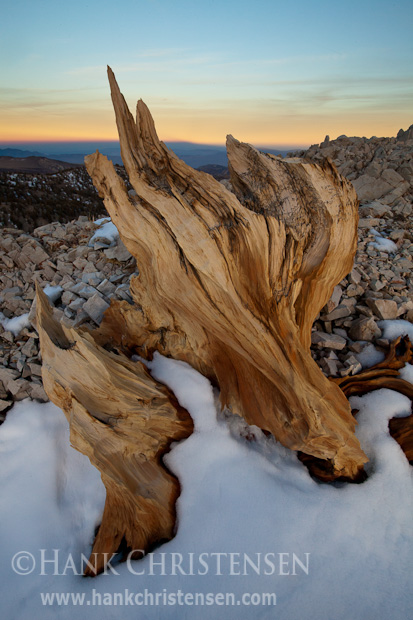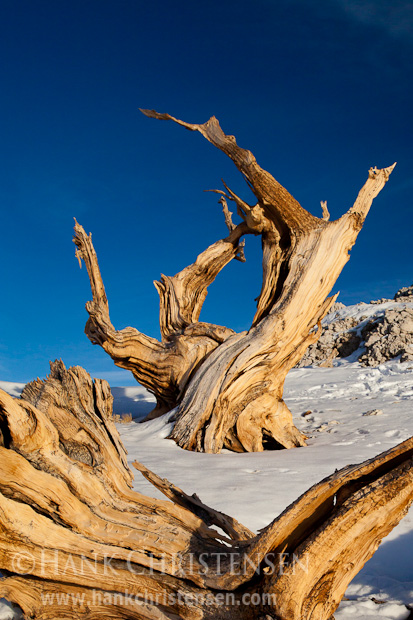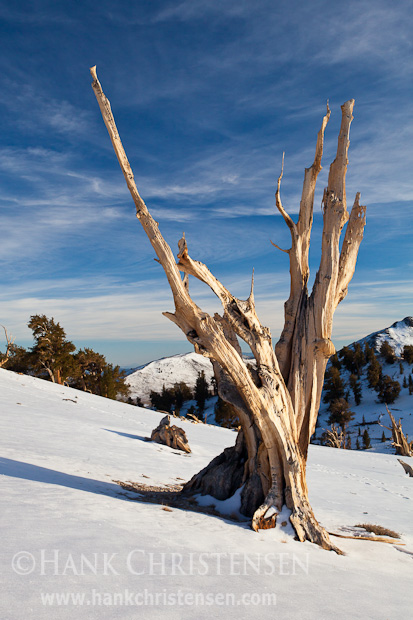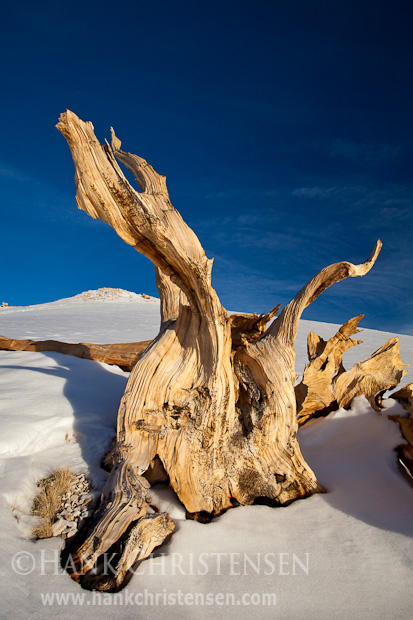
On my recent trip to the eastern Sierra to photograph the fall colors, I visited the Ancient Bristlecone Pine Forest in the White Mountains, part of the Inyo National Forest. I had done some reading about the area from books such as David Muench’s classic Timberline Ancients (out of print), and several of Galen Rowell’s insightful essays from Vision and Inner Game of Outdoor Photography. But actually being there and walking among these trees was a spiritual experience, and one I will not soon forget.
We were blessed with a recent snow storm that blanketed the crest of the White Mountains – not enough to close the road, and just enough to provide a clean contrast to the rough, twisted texture of the bristlecone. We were working an exposed western-facing slope, and after taking a few establishing shots, I climbed to the top of the hill. I quickly remembered that I was at 11,500 feet in elevation, as I was out of breath after only a few steps! My goal in the photo above was to capture the vibrant colors of sunset reflected in the wood of the bristlecone, while also getting the colors in the opposite horizon, as well as the earth shadow as it crept across the eastern foothills and Nevada desert beyond. The warm pastels in the wood are continued in the sunset colors of the sky above.
All lengths of lens work here, depending on your personal style and vision – whether it is to shoot a distant mountain top grove with a telephoto, or to crawl up inside the gnarled spiral of a branch with a fish-eye. The challenge in shooting these trees is to try to decide what to include and what to leave out of the frame. One question I kept coming back to that helped me to focus was, “What is the main point of this photo?” If my answer was “the texture of this branch,” then why include the roots of the tree? If my answer was “to show the desolate environment in which these trees live,” then I knew to shoot wide and and treat an entire group of trees as the main subject.
Below are a few more photos I took while exploring the bristlecone forest.




